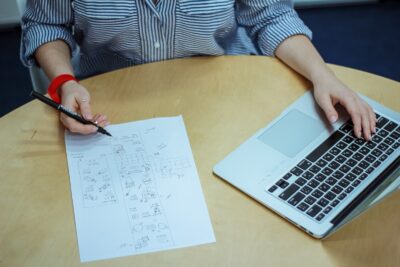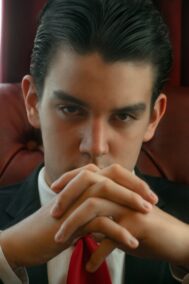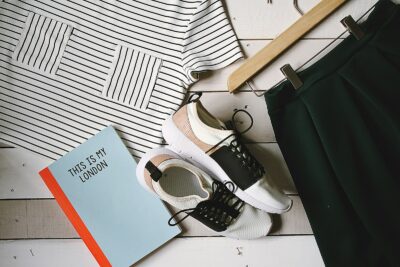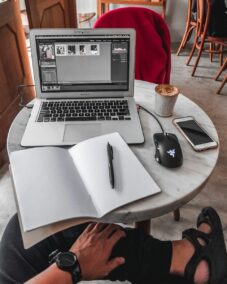Evolution of Style
Change is a constant in life, and it often reflects not just shifts in circumstances but also in personal choices, including one’s sense of style. In this era of evolving fashion norms, the transition from traditional attire to modern wardrobe choices represents more than just a change in clothing; it signifies a broader journey of adaptation, self-expression, and embracing the winds of change.
Breaking the Mold: A Stylish Revolution
My mama never wore a pair of pants when I was growing up, and now that’s all she wears,” whispers the quote, like a silk scarf brushed past a secret. It echoes with the weight of transformation, a mother stepping through the looking glass of fashion, trading the familiar whispers of skirts for the confident stride of trousers. This seemingly simple shift, friend, holds within it a revolution – a quiet rebellion against the shackles of expectation, a defiant embrace of the unconventional. For fashion, beyond the fleeting trends and glittering runways, is a language of belonging, a silent dialogue between personal identity and societal norms.
Traditions, like well-worn garments, drape themselves comfortably around our shoulders, their textures woven from threads of generations past. Mothers in dresses, daughters in dresses – a lineage of expectation, a whispered symphony of femininity played out in rustling silks and swirling fabrics. But within this melody, a new rhythm begins to pulse. It starts with a tentative step, a trouser leg replacing the familiar swish of a skirt, a whispered defiance against the confines of what “should be.” This sartorial evolution, friend, is more than just a shift in wardrobe; it’s a metamorphosis of the soul, a declaration that identity is a living tapestry, constantly evolving with the touch of experience and the whispers of change.
The embrace of pantsuits, then, becomes a battle cry in this silent revolution. It’s a rejection of the binary of skirt-bound fragility and trouser-clad stoicism, a bold claim that femininity and strength can coexist in the same silken thread, woven into a garment of self-possession. Mothers who once navigated the world in the soft hues of tradition now march in the steely confidence of trouser strides, their transformation not a betrayal of heritage, but its vibrant evolution.
Of course, not all revolutions unfold on velvet runways. There will be whispers of disapproval, murmurs of “unbecoming” echoing through the corridors of convention. But the woman who has tasted the freedom of a well-tailored trouser suit, who feels the power coursing through her veins with each confident stride, is not easily swayed. She knows that true progress lies not in blind adherence to the past, but in the brave embrace of the future, each change in her wardrobe a brushstroke on the canvas of her self-defined identity.
So, the next time you see a woman stride past in a pantsuit, remember the silent revolution she embodies. In the rustle of her fabric, hear the echoes of mothers and daughters, of tradition and transformation, of a world where fashion becomes not a constricting corset, but a vibrant tapestry woven with threads of freedom and self-expression. Forever etching her name in the annals of sartorial evolution, not as a rebel tearing down the past, but as a trailblazer, stitching the future one confident stride at a time.
The Role of Change Management in Fashion
Change management principles, often applied in the business world, find an unexpected resonance in the realm of fashion. The transition from traditional dresses to modern pantsuits involves a deliberate and strategic shift. It’s not just about changing attire; it’s about managing perceptions, adapting to new trends, and navigating the complexities of evolving fashion landscapes.
Fashion as a Form of Executive Coaching
Just as individuals seek executive coaching for professional development, fashion choices can be a form of self-coaching. The adoption of pantsuits by the individual in question suggests a conscious decision to redefine personal style. Fashion, in this context, becomes a tool for self-expression, confidence-building, and embracing one’s authentic self.
Empowering Choices: The Impact of Executive Coaching in Style
Executive coaching aims to empower individuals to make informed and impactful choices. Similarly, the decision to transition from traditional attire to a more contemporary style empowers individuals to express their identity and navigate societal expectations confidently. It’s a subtle yet powerful form of self-coaching through fashion.
From Cultural Norms to Modern Trends
The shift in the individual’s mother’s wardrobe reflects not only a personal choice but a broader societal change. It raises questions about the influence of cultural norms on fashion and how evolving trends challenge and reshape traditional expectations. The adoption of pants symbolizes a departure from gendered clothing norms and aligns with the broader movement towards inclusivity and gender-neutral fashion.
Change Leadership in Fashion
Leadership is about setting trends, inspiring change, and leading by example. In the realm of fashion, embracing modern styles represents a form of change leadership. It sends a message of openness to new ideas, a willingness to challenge norms, and a commitment to personal growth and authenticity.
Conclusion: Fashioning a New Narrative
As the individual’s mother transitions from exclusively wearing dresses to embracing pantsuits, a new narrative in fashion unfolds. It’s a story of adaptability, personal growth, and the courage to defy traditional expectations. This evolution in style speaks to the broader themes of change management, executive coaching, and change leadership, demonstrating that fashion is not just about what we wear but a powerful tool for expressing identity and navigating the currents of change.
#FashionEvolution #ChangeManagement #ExecutiveCoaching #FashionLeadership #PersonalGrowth























